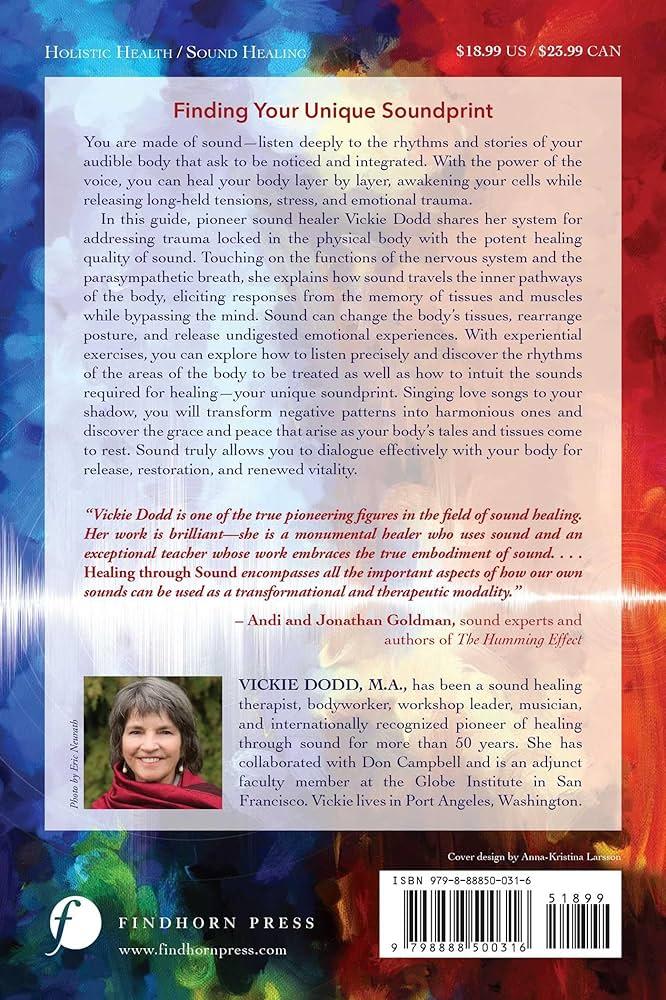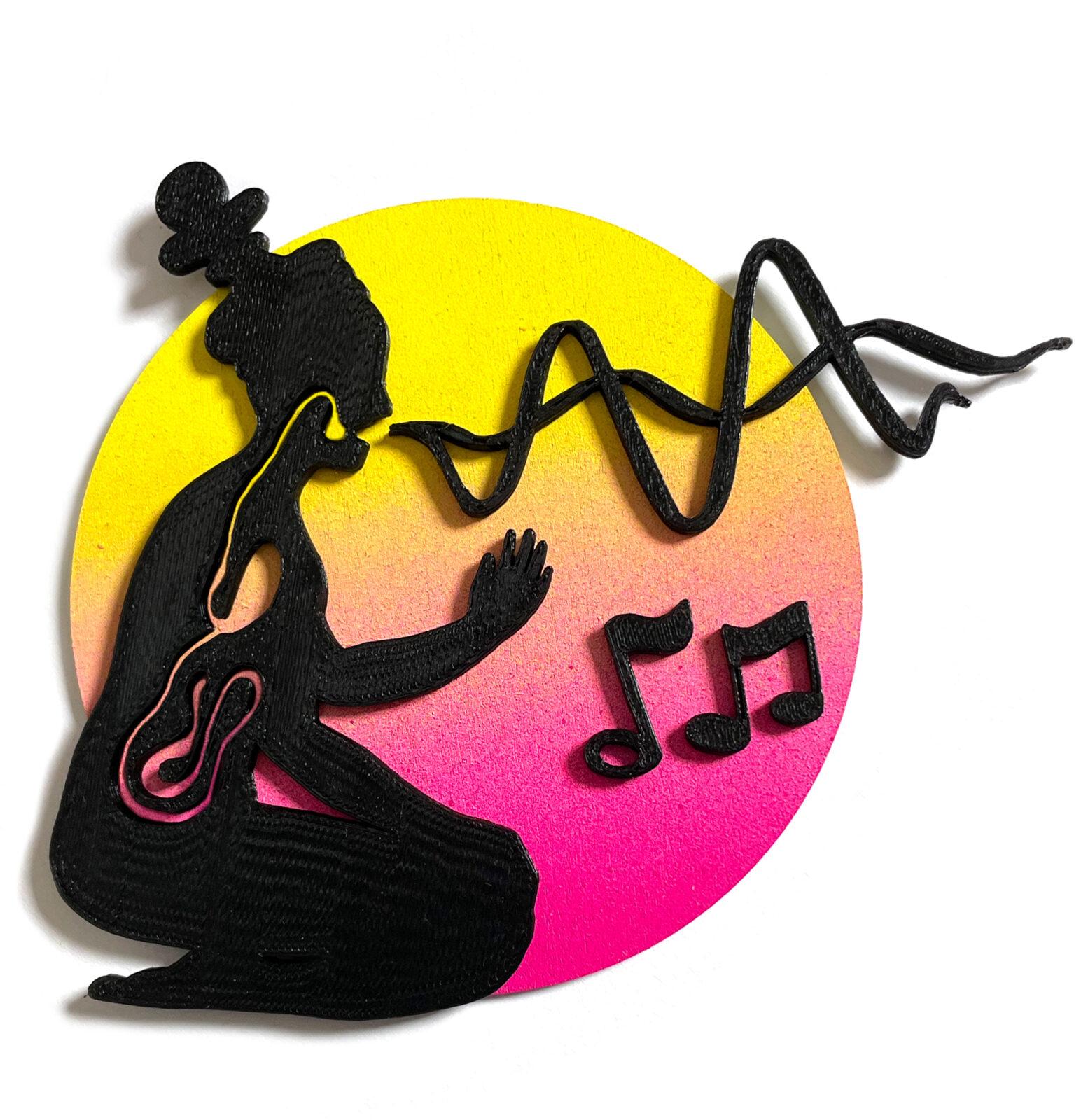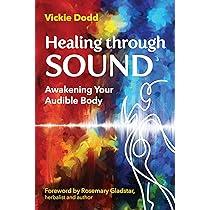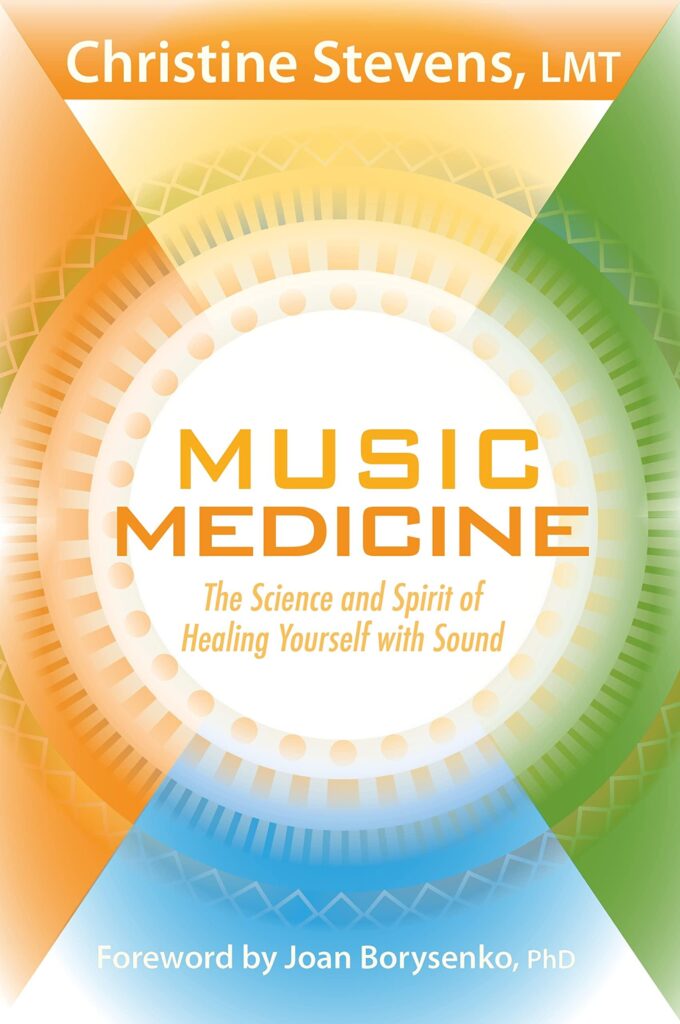In the quiet resonance of a single note lies a profound power-one that transcends the boundaries of mere sound to touch the very essence of our being. Healing through sound is not a new concept; it is an ancient practice woven into the spiritual traditions of cultures around the world. Yet, beneath its mystical allure, there exists a scientific tapestry waiting to be explored. This article delves into the spiritual science behind sound healing, inviting you to discover how vibrations and frequencies can align mind, body, and spirit, fostering harmony and well-being in ways both subtle and transformative.
Table of Contents
- The Ancient Roots of Sound Healing and Its Cultural Significance
- Understanding the Vibrational Frequencies That Influence Mind and Body
- The Role of Meditation and Chanting in Enhancing Spiritual Well-being
- Incorporating Sound Therapy Into Daily Life for Holistic Health
- Guidelines for Choosing the Right Instruments and Practices for Personal Healing
- Frequently Asked Questions
- Closing Remarks

The Ancient Roots of Sound Healing and Its Cultural Significance
Long before modern science sought to quantify the effects of sound, ancient civilizations embraced it as a profound tool for healing and spiritual awakening. From the resonant chants of Tibetan monks echoing through mountain monasteries to the rhythmic drumming rituals of Indigenous tribes, sound was revered as a bridge between the physical and the metaphysical realms. These early practitioners understood that vibrations could influence the human body and mind, fostering balance and harmony within.
Across continents and cultures, sound healing manifested in diverse yet interconnected forms:
- Ancient Egypt: Priests used vocal toning and musical instruments in temples to invoke divine energies and promote well-being.
- India: The sacred syllable “Om” was believed to be the primordial sound of the universe, used in meditation to align the chakras and awaken consciousness.
- Aboriginal Australia: The didgeridoo, with its deep, droning vibrations, was employed in ceremonies to heal and connect with the Dreamtime.
- Greece: Philosophers like Pythagoras explored the mathematical relationships of sound frequencies, linking them to cosmic order and human health.
These practices were not isolated; rather, they illustrate a universal recognition of sound as a potent spiritual language. The cultural significance extended beyond healing-sound was a means to narrate history, invoke protection, and celebrate life’s mysteries. The power of sound lay in its ability to transcend words and touch the soul directly, creating a shared human experience that continues to inspire contemporary healing modalities.
| Culture | Sound Healing Tool | Purpose |
|---|---|---|
| Ancient Egypt | Sistrum (rattle) | Spiritual purification and protection |
| India | Mantra chanting | Chakra alignment and meditation |
| Native America | Flute | Healing ceremonies and storytelling |
| Tibet | Singing bowls | Balancing energy and inducing trance states |

Understanding the Vibrational Frequencies That Influence Mind and Body
Every object and being emits a unique vibrational frequency, a subtle pulse that resonates through the fabric of our existence. These frequencies are not just abstract phenomena; they are the invisible threads weaving the intricate dance between mind and body. When aligned harmoniously, these vibrations promote well-being, clarity, and balance. However, disruptions or discordant frequencies can manifest as stress, discomfort, or emotional turmoil.
Sound healing taps into this profound connection, using specific frequencies to recalibrate the body’s natural rhythm. Instruments such as tuning forks, singing bowls, and even vocal toning produce resonances that can penetrate deeply, altering brainwave patterns and stimulating cellular rejuvenation. This therapeutic approach acknowledges that the mind and body are not separate entities but a fluid continuum influenced by the vibrational environment.
Understanding the spectrum of these frequencies reveals why certain tones evoke calm while others energize or provoke thought. For instance, frequencies in the range of 432 Hz are often associated with relaxation and emotional healing, whereas higher frequencies can activate alertness and creativity. This dynamic interplay suggests a personalized soundscape can be crafted to support individual healing journeys.
- Low Frequencies (20-200 Hz): Grounding, physical relaxation
- Mid Frequencies (200-2000 Hz): Emotional balance, mental clarity
- High Frequencies (2000+ Hz): Spiritual insight, heightened awareness
| Frequency Range | Effect on Mind | Effect on Body |
|---|---|---|
| 20-200 Hz | Soothes anxiety | Relaxes muscles |
| 200-2000 Hz | Enhances focus | Balances heart rate |
| 2000+ Hz | Stimulates intuition | Boosts immune response |

The Role of Meditation and Chanting in Enhancing Spiritual Well-being
In the realm of spiritual practices, meditation and chanting serve as powerful conduits for elevating the inner self. These ancient techniques harness sound and silence to guide the mind beyond its usual chatter, creating a sacred space where healing unfolds naturally. Meditation cultivates a profound stillness, allowing practitioners to connect with their deeper essence, while chanting infuses this stillness with vibrational energy that resonates through the body and soul.
The rhythmic repetition of mantras or sacred sounds during chanting acts as a sonic anchor, steadying the mind and opening pathways to heightened awareness. This vibrational resonance is more than mere sound; it is a form of spiritual alchemy that transforms mental turbulence into calm clarity. Many experience a sense of unity and alignment with the universe, as chanting harmonizes the frequencies within and around us.
Together, meditation and chanting work synergistically to:
- Balance energy centers: Aligning chakras and subtle energies for holistic well-being.
- Reduce stress: Lowering cortisol levels through focused breath and sound.
- Enhance mindfulness: Cultivating present-moment awareness and emotional resilience.
- Deepen spiritual connection: Opening channels to higher consciousness and inner peace.
Below is a simple outline illustrating the complementary effects of meditation and chanting on spiritual well-being:
| Practice | Primary Focus | Impact on Spirit | Typical Outcome |
|---|---|---|---|
| Meditation | Stillness & Awareness | Calms the mind, opens insight | Inner peace, clarity |
| Chanting | Sound & Vibration | Resonates energy, uplifts mood | Joy, spiritual upliftment |
Incorporating Sound Therapy Into Daily Life for Holistic Health
Integrating sound therapy into your everyday routine can be a transformative journey toward enhanced well-being. By intentionally embedding sound healing practices into daily moments, you harness the subtle power of vibrations to recalibrate your mind, body, and spirit. Whether it’s a brief morning chant or an evening session with crystal bowls, these sonic experiences create a sanctuary of calm amidst the hustle.
Start small by incorporating simple sound rituals like humming your favorite tune or listening to nature-inspired soundscapes during breaks. These sounds act as gentle anchors, grounding your awareness and inviting mindfulness. Over time, these consistent auditory cues foster a deeper connection to your inner rhythms and promote emotional balance.
Practical ways to bring sound therapy into daily life include:
- Using tuning forks to release tension in specific areas of the body.
- Engaging in guided meditations with harmonic music to ease stress.
- Practicing mantra repetition to align your vibrational energy.
- Creating a sound corner at home with instruments like singing bowls or chimes.
| Time of Day | Sound Therapy Activity | Benefit |
|---|---|---|
| Morning | Morning mantra chanting | Sets positive tone for the day |
| Afternoon | Listening to ambient nature sounds | Restores focus and lowers fatigue |
| Evening | Crystal bowl meditation | Promotes deep relaxation and sleep |
Guidelines for Choosing the Right Instruments and Practices for Personal Healing
Selecting the ideal tools for sound healing requires more than just familiarity with instruments; it demands an intuitive connection to their vibrational essence. Start by exploring the tonal qualities that resonate most deeply with your spirit-whether it’s the deep hum of Tibetan singing bowls or the clear, pure tones of crystal bowls. Each instrument carries unique energetic signatures that can influence your emotional and physical state in distinct ways.
When considering practices, prioritize those that align with your current state of being and spiritual goals. Sound healing is not a one-size-fits-all journey; it’s a personalized exploration. Incorporate mindful listening and breathwork to enhance the reception of sound waves, allowing the vibrations to penetrate layers of tension and stagnation. Remember, consistency and openness to experience profoundly shape the healing outcome.
- Trust Your Intuition: Let your senses guide you to instruments and sounds that evoke a sense of peace or curiosity.
- Quality Over Quantity: Choose well-crafted instruments with pure tones rather than a large collection of lesser quality tools.
- Environment Matters: Create a serene space free from distractions to amplify the subtle power of sound vibrations.
- Integrate Complementary Techniques: Combine sound with meditation, movement, or visualization for deeper healing layers.
| Instrument | Vibrational Essence | Recommended Practice |
|---|---|---|
| Tibetan Singing Bowl | Grounding, deep resonance | Chakra balancing meditation |
| Crystal Bowl | Clarity, high frequency | Morning clarity sessions |
| Shamanic Drum | Rhythmic pulsation, earth connection | Journeying and trance states |
| Didgeridoo | Vibrational cleansing | Deep breathwork integration |
Frequently Asked Questions
Q&A: Healing Through Sound – The Spiritual Science Behind It
Q1: What is sound healing, and how does it work?
A: Sound healing is an ancient practice that uses vibrations and frequencies to promote physical, emotional, and spiritual well-being. The premise is that everything in the universe, including our bodies, resonates at specific frequencies. When these frequencies fall out of harmony due to stress or illness, sound vibrations-like those from singing bowls, tuning forks, or chanting-can help restore balance by realigning our internal energy fields.
Q2: Is there a scientific basis for sound healing, or is it purely spiritual?
A: Sound healing bridges both science and spirituality. Scientifically, sound waves can influence brainwave patterns, heart rate, and nervous system responses, fostering relaxation and reducing stress. Spiritually, many traditions view sound as a divine force, a medium through which healing energy flows. Modern research into cymatics-the study of visible sound vibrations-also supports the idea that sound shapes matter, hinting at deeper energetic interactions within the body.
Q3: How does sound affect our spiritual well-being?
A: Spiritually, sound is seen as a language of the soul. Chanting mantras or listening to sacred music can quiet the mind, deepen meditation, and open pathways to higher consciousness. The vibrations resonate with subtle energy centers, or chakras, facilitating emotional release and energetic alignment. This spiritual tuning helps individuals feel more connected to themselves and the universe, fostering inner peace and clarity.
Q4: What types of sounds are commonly used in healing practices?
A: A variety of sounds are employed, each with unique properties. Tibetan singing bowls produce harmonic overtones that soothe the nervous system. Crystal bowls emit pure, clear tones that can stimulate energy centers. Tuning forks offer precise frequencies to target specific areas of imbalance. Additionally, chanting, drumming, and nature sounds like flowing water or birdsong are used to invoke relaxation and spiritual connection.
Q5: Can anyone benefit from sound healing?
A: Yes, sound healing is accessible and adaptable to all ages and backgrounds. Whether someone is seeking relief from anxiety, physical pain, or spiritual disconnection, sound therapy offers a gentle, non-invasive approach. However, it’s important to approach it as a complementary practice and consult healthcare professionals for serious medical conditions.
Q6: How can one incorporate sound healing into daily life?
A: Integrating sound healing can be as simple as listening to calming music, chanting a mantra, or using a tuning fork during meditation. Creating a dedicated sound ritual-such as ringing a singing bowl at the start of the day or before sleep-can cultivate mindfulness and emotional balance. Even mindful listening to nature’s soundscape can recalibrate your energy and foster healing.
Q7: What is the future of sound healing in modern wellness?
A: As interest in holistic health grows, sound healing is gaining recognition as a valuable therapeutic tool. Advances in technology and neuroscience are deepening our understanding of how sound influences the body-mind-spirit connection. This fusion of ancient wisdom and modern science promises to expand sound healing’s role in integrative medicine and spiritual growth worldwide.
This Q&A explores the harmonious dance between sound and spirit, inviting readers to discover the transformative science and sacred art of healing through sound.
Closing Remarks
As the vibrations fade and silence settles, we are reminded that healing through sound is more than a practice-it is a journey into the subtle frequencies that connect mind, body, and spirit. Whether through ancient chants, harmonic tones, or the gentle resonance of nature’s own melodies, sound invites us to explore the unseen energies that shape our well-being. In embracing this spiritual science, we open ourselves to a timeless dialogue between the audible and the soul, where healing is not just heard, but deeply felt.

